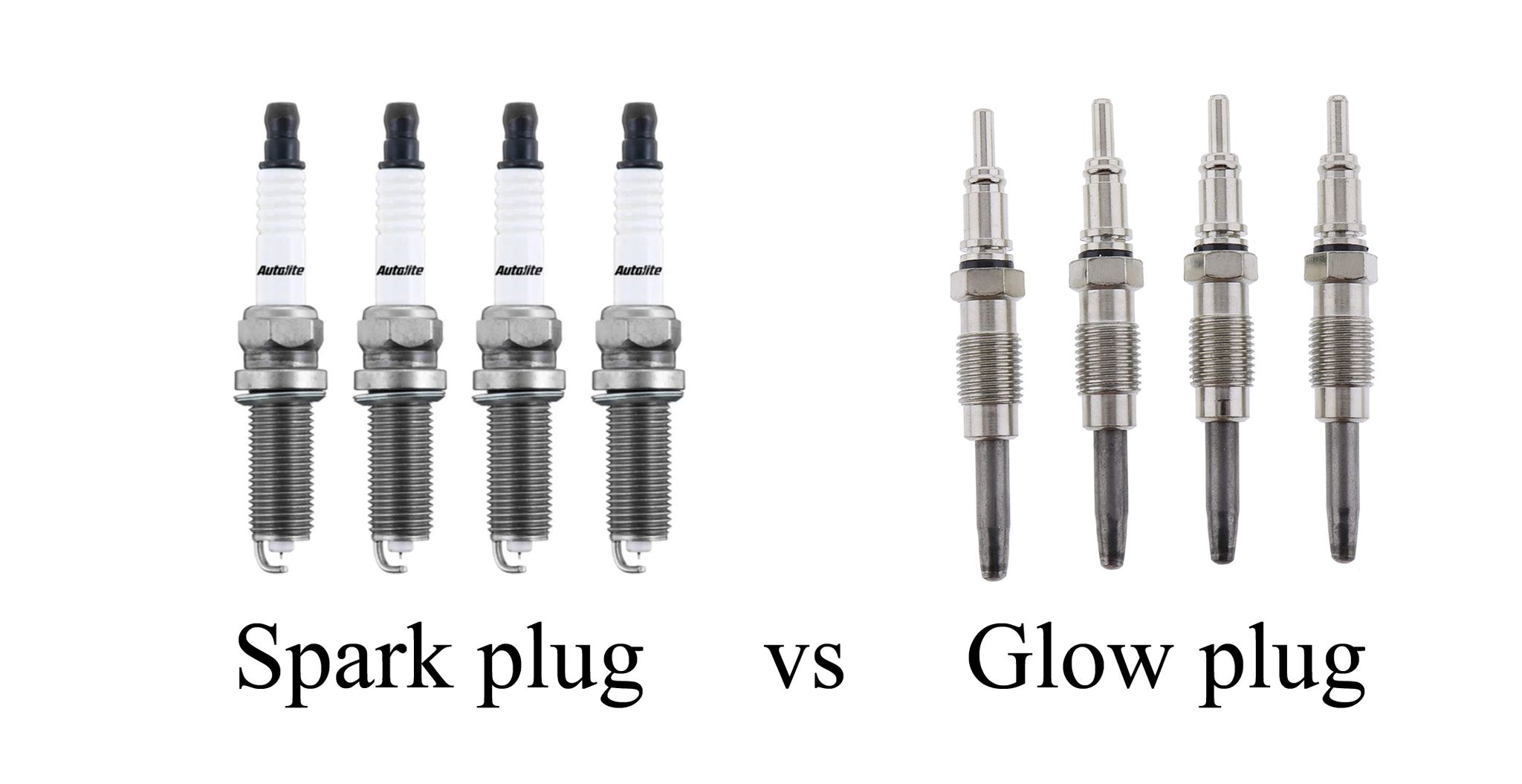Spark plugs and glow plugs are two unique types of components, the first of which is utilized in gasoline engines and the second in diesel engines. The major distinction between both is that a spark plug starts the engine by producing a spark, whereas a glow plug aids the engine in starting by providing heat.
It is easy to get confused when it comes to the ‘spark plug vs. glow plug’ debate. Many people think they are the same. However, these two serve completely different purposes in different types of engines.
Despite the fact that their primary role is to assist engines in starting, they differ in subtle functioning. The spark plug provides continuous ignition for the vehicle’s operation, whereas the glow plug only delivers heating at start-up. To clear up any misconceptions, this article will go over the ‘spark plug vs. glow plug’ debate and the major differences between the two.
What Is a Spark Plug?
A spark plug generates an electric arc or spark in the air-fuel mixture of a gasoline engine that is required for starting the vehicle. The plug receives a high-voltage charge from the ignition coil and causes a spark. This process is repeated a hundred times in a few seconds.
The spark plug has an insulator and central conductor that are protected by a shell. It is available in a variety of types such as copper, platinum, and iridium as well as thread or nut sizes. This component measures the ionization in the cylinder, the current in the spark plug is also used for replacing the cam phase sensor, knock sensor, and misfire measurement.
What Is a Glow Plug?
A glow plug generates the heat required to start a diesel engine. It features a pencil-like thin metal body. Because of the glow plug’s electrical resistivity, when it is electrified, it generates light and heat, thus the name is “glow plug.” As diesel has a relatively low ignition temperature it needs high warmth for function, the glow plug solves this issue. We can call glowplug a heating device as well. The glow plug only works during the ignition process.
This component has two types: in-cylinder and in-manifold. In pre-chambered engines, in-cylinder glow plugs are used where they stay inside the chamber and in direct-injected engines, in-manifold glow plugs reside inside the combustion chamber. However, usually, direct-injected diesel engines do not require any starting aid but that depends on the engine design.
Spark Plug vs. Glow Plug: Key Differences
| Comparison | Spark Plug | Glow Plug |
| Function | produce sparks | produce heat |
| Types | Material types- copper, platinum, iridium, technological types- double platinum, iridium XP | Two types- in-cylinder and in-manifold |
| Weather | Not important | Important |
| Installation | Easy to install, can be done at home | Need professional help |
| Prominent brands | Bosch, NGK, Champion, ACDelco, Denso | NGK, Durite, Denso, BERU, |
Spark Plug vs. Glow Plug: Major Differences
- Engines that use spark plugs need replacement after a required time. Such as copper spark plugs need replacement after every 30,000 miles, and platinum and iridium need changing after 100,000-120,000 miles. Meanwhile, a glow plug does not need any replacement, once they are installed they can perform until they wear out or fail.
- The glow plug has a thin metal body and its filament is fitted to the tip. The tip is made of materials like platinum and iridium. Because these two materials can resist oxidation and extreme temperatures. In the spark plug the insulator tip is not fitted to the main insulator and the tip is made of iridium, platinum, and copper.
- Temperature is important for both of these components. A spark plug is set to a thermal tolerance range, the temperature of a spark plug should be hotter enough to burn carbon fouling and colder enough to resist pre-ignition. The glow plug is called a heating plug because diesel engines need high temperatures to ignite the compression of air. So we can say, a glow plug can tolerate more heat than a spark plug.
Spark Plug vs. Glow Plug: Pros and Cons
Pros
| Spark Plugs | Glow Plugs |
| -Continuous spark -Less gas emission -Smooth start -Better throttle response -Economically sound -Improve overall engine performance | -Help in starting -Reduce low turnoverNvibrations -Remove cold engine effects -Suppress engine noise -It reduces oxidation -Do not need frequent replacement |
Cons
| Spark Plugs | Glow Plugs |
| -Need periodic replacement | -Emit white smoke |
Final Words
Now we know that even though spark plugs and glow plugs have the same type of responsibility they differ in their construction and performance. The glow plug is used in the diesel engine while the spark plug is used in the gasoline engine. The spark plugs can affect the other function of the vehicle, glow plugs do not have that much interference. We can conclude, that this is the core difference between ‘spark plug vs. glow plug’ confusion.
See also:

